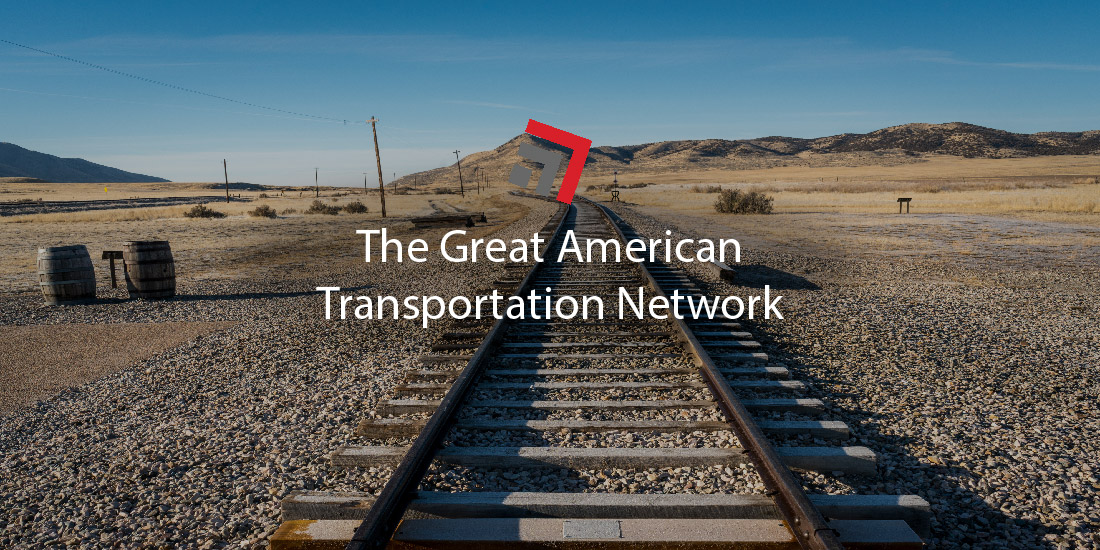When the rail industry makes headlines for contentious labor disputes or hazardous derailments, it becomes increasingly difficult to appreciate the productive contributions it has historically had on the country’s commerce.
Along with its internal strife, the mode has also struggled to recapture lost market share from its road warrior competitor—trucking.
The gold standard of the U.S. freight rail network as the largest, safest, and most cost-efficient system in the world is no longer revered with the same aplomb as in the past. Some shippers very well view the mode as an obsolete dinosaur sulking over its existential crisis.
The following isn’t about what the industry is doing to restore its competitive edge, rather it’s about brushing up on the history of America’s freight rail network.
Highly profitable, highly privatized
The freight rail industry is valued at over $80 billion with its transportation network spanning nearly 140,000 route miles.
Altogether it is operated by a collection of seven Class I railroads (railroads with revenues exceeding $490 million), 22 regional lines, and 584 local or short lines.
Unlike trucking which uses public roadways and interstates, these railroads, which are private companies, own their expansive networks. That means they are responsible for their own maintenance and construction projects.
From the beginning to the present day: History of the railroads
The industry has been around for hundreds of years, well before trucks or planes were even invented. For the better part of its history, rail was America’s keystone mode of transportation.
The following is a timeline of notable events from freight rail’s origin to the present day.
- 1797: The steam locomotive, which moves by expanding steam and fueled by combustible material, is invented across the pond in England. Steam-powered trains are no longer used in freight services in the U.S. and virtually all other countries. However, the trailblazing tech is still appreciated by train buffs and deployed by heritage lines, like Strasburg.
- 1827: North America’s first railroad is founded. The Baltimore & Ohio is mainly charted by local merchants who used the network to trade with Appalachian settlers.
- 1831: U.S. postal services are carried out on railroads for the first time. Americans are receiving mail from region to region at an expedited clip.
- 1840: At this time, there is more than 2,800 miles of railroad in the U.S. A far cry from today’s network, the figure nonetheless shows the industry’s blistering pace of expanding its operation. Just two decades later, this will expand to 30,000 miles—more than the rest of the world combined.
- 1862: President Abraham Lincoln inaugurates the transcontinental railroad construction. The ambitious project would link frontier markets, like California, with the rest of the nation. A few years later, America’s “golden age” of railroad begins—a time where no other transport mode challenges it and the rail network will grow from 35,000 miles to over 254,000 miles in 1916.
- 1900-1940: After nearly fifty years of transportation monopoly and unperturbed capacity to grow, railroads finally sniff competition from other developing modes. By World War II, motorized vehicles, like buses or trucks, and planes are technologies the government subsidize and loosely regulate as opposed to the established rail industry.
- 1929-1938: America’s Great Depression also plays a role in rail’s descent from a prosperous era. The economic black hole will lead parts of the industry into bankruptcy.
- 1936: The Chicago Great Western Railroad begins moving truck trailers on flatcars (modified for this exact purpose). This is unofficial birthdate of intermodal transport. By the 1950s, intermodal—moving containers and trailers by rail—will be reported as a separate category of freight for the first time.
- 1976: After several bankruptcies in the years leading up, the Railroad Revitalization and Regulatory Reform Act grants reforms for the industry that makes it more malleable to changing circumstances. Conrail, a consolidation of six bankrupt Northeast railroads, becomes an immediate legacy of the reform.
- 1980: Congress passes the Staggers Rail Act. The law reduces regulatory authority over railroads and sparks fierce competition that will go on to restructure the industry completely.
- 1996: The Surface Transportation Board replaces the now-defunct Interstate Commerce Commission. The federal board assumes the responsibility of regulating rail rates and services. To this day, the STB remains entrusted with this role.
- 2008: Congress passes the Rail Safety Improvement Act of 2008. The law mandates that Positive Train Control (PTC) is installed on main lines that transport passengers or toxic materials.
- 2015: Railroads spend $30.3 billion on construction and maintenance of trains, railcars, tracks, and other network infrastructure. The hefty investment is yet another example of the industry having to foot its own bill on improvements while motor carriers, airlines, and barges operate on trade lanes that are publicly financed.
- 2022: Using power vested in the Railway Labor Act to prevent nationwide strikes, President Joe Biden overrides stalling contract negotiations between 12 rail labor unions and the railroads. Despite, a handful of these unions not accepting terms, the industry moves forward with a new labor contract.
- 2023: The issue of railroad safety becomes highly-publicized after a Norfolk Southern train derailment in Ohio.
Final Thoughts
Rail is still eyeing to keep making history, but whatever future prosperity it looks to achieve will not be familiar to what was captured in the past.
The rise of this mode and its “golden age” era can never be rewritten again. Rail’s unique advantage, a revolutionary mode with no competitors, has been at rest since the early 20th century.
Even optimists in the industry have realized rail is in a lull at this time but assert they can use this downturn as a runway to improve service levels and ready the bar high for future success.
Please contact us if you have any questions regarding this topic or any others in cross-border logistics. In addition, stay up to date with weekly headlines from both trucking and rail via our Road Map newsletter.
More blogs similar to this:



Recent Comments